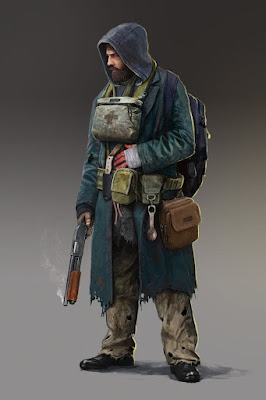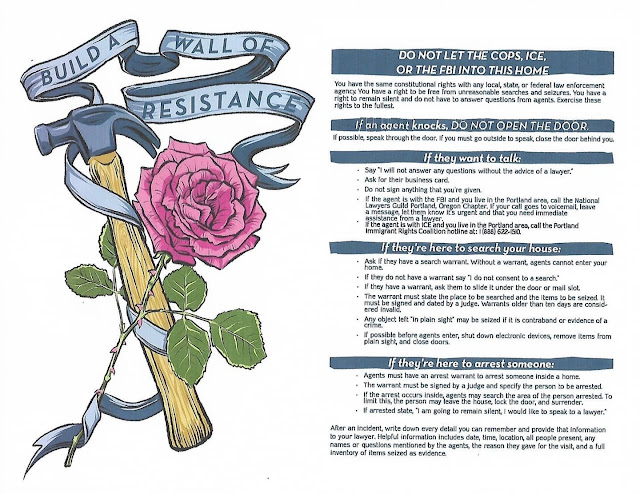Medicine at the End of the World
With no antibiotics, there would be no treatment for bacterial infections; pneumonia or a simple cut could kill again, contagious diseases (including those sexually transmitted) would make a comeback, and high mortality rates would be associated with any surgery. Poor hygiene and disrupted water supplies would lead to an increase in diseases such as typhoid and cholera. Without vaccines, there would be a progressive return of infectious diseases such as polio, tetanus, whooping cough, diphtheria, mumps, etc. especially among children. People suffering from chronic illnesses such as asthma, diabetes, or epilepsy would be severely affected with many dying (especially insulin-dependent diabetics). There would be no anesthetic agents resulting in a return to torturous surgical procedures with the patient awake or, if they were lucky, drunk or stoned. The same would apply to painkillers; a broken leg would be agony, and dying of cancer would be distressing for the patient and their family. Without reliable oral contraceptives or condoms, the pregnancy rate would rise and with it the maternal and neonatal death rates, women would die during pregnancy and delivery again, and premature babies would die. Women would still seek abortions, and without proper instruments or antibiotics death from septic abortion would be common again. In the absence of proper dental care teeth would rot, and painful extractions would have to be performed. What limited medical supplies available would have to be recycled, resulting in increasing risks of hepatitis and HIV infection.
The practice of medicine would go back 200 years.
Sometime in the future...
Rumors of an outbreak of unusually severe respiratory illness in two villages in a remote province reach the ministry of health in one of the World Health Organization’s (WHO’s) Member States. A team is dispatched to the province and learns that the outbreak started about a month earlier. The team is able to identify at least 50 cases over the previous month. All age groups have been affected. Twenty patients are currently in the provincial hospital. Five people have already died of pneumonia and acute respiratory failure. Surveillance in surrounding areas is increased, and new cases are identified throughout the province. Respiratory specimens collected from several patients are tested at the national laboratory and are found to be positive for type A influenza virus, but they cannot be further subtyped. The isolates are sent to the WHO Reference Centre for Influenza for further characterization, where they are characterized as influenza A(H6N1), a subtype never isolated from humans before. Gene sequencing studies further indicate that most of the viral genes are from a bird influenza virus, with the remaining genes derived from a human strain. This information is immediately transmitted back to the ministry of health where the cases were first identified, and reported throughout the WHO Global Influenza Surveillance Network. More cases appear in surrounding towns and villages. The new influenza virus begins to make headlines in every major newspaper, and becomes the lead story on news networks. Countries are asked by WHO to intensify influenza surveillance and control activities. Key government officials throughout the region are briefed on a daily basis, while surveillance is intensified.
Over the next two months, outbreaks begin to take place in neighboring countries. Although cases are reported in all age groups, young adults seem to be the most severely affected. One in every 20 patients dies. The rate of spread is rapid, and countries initiate travel restrictions and quarantine measures. Educational institutions are closed. Widespread panic begins because supplies of antiviral drugs are severely limited and a suitable vaccine is not yet available. One week later, there are reports that the H6N1 virus has been isolated from airline passengers with respiratory symptoms arriving from affected countries.
A few weeks later, the first local outbreaks are reported from other continents. Rates of absenteeism in schools and businesses begin to rise. Phones at health departments ring constantly. The spread of the new virus continues to be the major news item in print and electronic media. Citizens start to clamor for vaccines, but they are still not available. Antiviral drugs cannot be obtained. Police departments, local utility companies and mass transit authorities experience significant personnel shortages that result in severe disruption of routine services. Soon, hospitals and outpatient clinics are critically short-staffed as doctors, nurses and other healthcare workers themselves become ill or are afraid to come to work. Fearing infection, elderly patients with chronic medical conditions do not dare to leave home. Intensive care units at local hospitals are overwhelmed, and soon there are insufficient ventilators for the treatment of pneumonia patients. Parents are distraught when their healthy young adult sons and daughters die within days of first becoming ill. Several major airports close because of high absenteeism among air traffic controllers. Over the next 6–8 weeks, health and other essential community services deteriorate further as the pandemic sweeps across the world.
***
We have added a few Prepper / Survival Medicine references to the PNW Street Medics Facebook Group Files Section (https://www.facebook.com/groups/pnwstreetmedics)
- Survival Doctors Complete Handbook - by James Hubbard MD MPH
- Survival MD by Dr Radu Scurtu (2016)
- Survival Medicine Handbook 2nd Edition by Joseph and Amy Alton
- Survival Nurse - Ragnar Benson (2000)
- Survival and Austere Medicine - 3rd Edition (2017)
- How to Survive the Collapse of Civilization - by Bob Livingston (2009)
- The Prepper's Medical Handbook by William Forgey MD (2020)
- Prepper’s Survival Natural Medicine by Rachel Smith (2021)
- Prepper’s Survival Natural Medicine Essential Long Term Survival Guide - by Jim Marrow (2022)
- Prepper's Natural Medicine Life-Saving Herbs, Essential Oils and Natural Remedies by Cat Ellis (2015)
- Survival Medicine by Matthew Coleridge (2020)
- Prepper’s Medical Handbook Prepper’s Long-Term Survival Guide by Emma Nora (2021)




Comments
Post a Comment